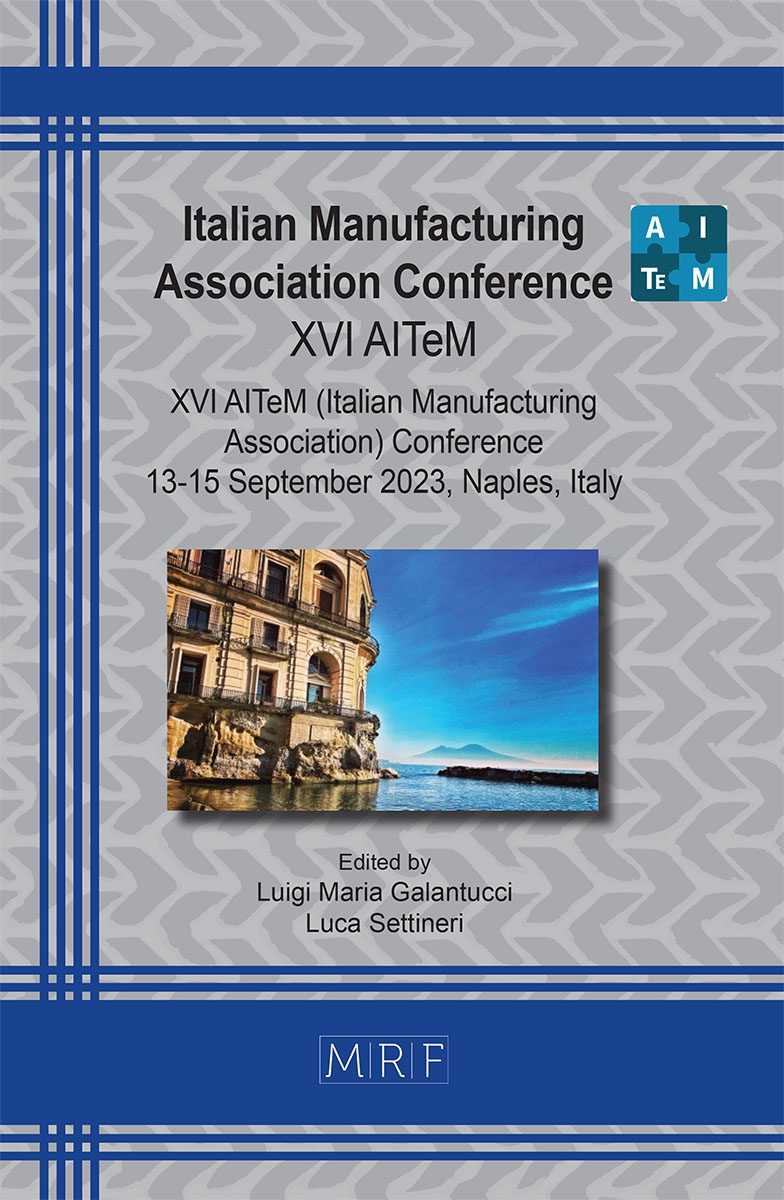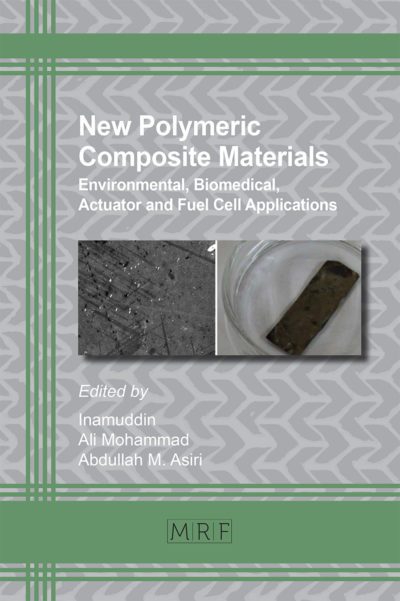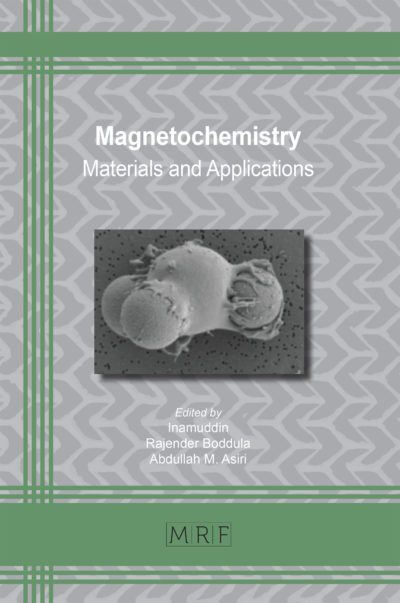Mechanical properties and dynamic response of 3D printed parts in PLA/P(3HB)(4HB) blends
Daniele Almonti, Clizia Aversa, Alessandra Piselli, Massimiliano Barletta
download PDFAbstract. Oil-based plastics can meet several technical requirements in different industrial applications at a reasonable cost, but they can cause high environmental impact. Bioderived polyesters like PLA and PHAs, are, instead, eco-friendly alternatives to reduce the environmental burden caused by conventional plastics. In this respect, dynamic response and mechanical properties of 3D printed parts made in (PLA)/Poly-3-hydroxybuutyrate-4-hydroxybutyrate(P(3HB)(4HB)) were investigated. The blends were achieved by extrusion compounding of different amount of P(3HB)(4HB) (0%, 10%, 20% and 30%) in PLA. The resulting compounds were extruded to achieve customized self-made filaments, which were reprocessed by Fused Filament Fabrication (FFF) to get the final parts. Hence, the 3D printed parts were tested to evaluate their performance, all of them showing good compromise between mechanical strength and flexibility as well as valuable dynamic response, with high potential in many fields. In particular, it has been observed that the addition of 10% of P(3HB)(4HB) is the most performing solution because it allows to obtain a 50% increase relative to the Young’s Modulus.
Keywords
Polymers, Material Extrusion, 3D Printing
Published online 9/5/2023, 9 pages
Copyright © 2023 by the author(s)
Published under license by Materials Research Forum LLC., Millersville PA, USA
Citation: Daniele Almonti, Clizia Aversa, Alessandra Piselli, Massimiliano Barletta, Mechanical properties and dynamic response of 3D printed parts in PLA/P(3HB)(4HB) blends, Materials Research Proceedings, Vol. 35, pp 206-215, 2023
DOI: https://doi.org/10.21741/9781644902714-25
The article was published as article 25 of the book Italian Manufacturing Association Conference
![]() Content from this work may be used under the terms of the Creative Commons Attribution 3.0 license. Any further distribution of this work must maintain attribution to the author(s) and the title of the work, journal citation and DOI.
Content from this work may be used under the terms of the Creative Commons Attribution 3.0 license. Any further distribution of this work must maintain attribution to the author(s) and the title of the work, journal citation and DOI.
References
[1] N. Burgos, I. Armentano, E. Fortunati, F. Dominici, F. Luzi, S. Fiori, F. Cristofaro, L. Visai, A. Jiménez, J. M. Kenny, Functional properties of plasticized bio-based poly (lactic acid)_poly (hydroxybutyrate)(pla_phb) films for active food packaging, Food and Bioprocess Technology 10 (2017) 770-780. https://doi.org/10.1007/s11947-016-1846-3
[2] J. Jiang, Q. Dong, H. Gao, Y. Han, L. Li, Enhanced mechanical and antioxidant properties of biodegradable poly (lactic) acid-poly (3-hydroxybutyrate-co-4-hydroxybutyrate) film utilizing α-tocopherol for peach storage, Packaging Technology and Science 34 (3) (2021) 187-199. https://doi.org/10.1002/pts.2553
[3] H. Zhao, Y. Bian, Y. Li, Q. Dong, C. Han, L. Dong, Bioresource-based blends of poly (3- hydroxybutyrate-co-4-hydroxybutyrate) and stereocomplex polylactide with improved rheological and mechanical properties and enzymatic hydrolysis, Journal of Materials Chemistry A 2 (23) 215 (2014) 8881-8892. https://doi.org/10.1039/c4ta01194e
[4] N. Loureiro, J. Esteves, J. Viana, S. Ghosh, Mechanical characterization of polyhydroxyalkanoate and poly (lactic acid) blends, Journal of Thermoplastic Composite Materials 28 (2) (2015) 195-213. https://doi.org/10.1177/0892705712475020
[5] J. Ostrowska, W. Sadurski, M. Paluch, P. Tyński, J. Bogusz, The effect of poly (butylene succinate) content on the structure and thermal and mechanical properties of its blends with polylactide, Polymer International 68 (7) (2019) 1271-1279 https://doi.org/10.1002/pi.5814
[6] I. Armentano, E. Fortunati, N. Burgos, F. Dominici, F. Luzi, S. Fiori, A. Jiménez, K. Yoon, J. Ahn, S. Kang, et al., Processing and characterization of plasticized pla/phb blends for biodegradable multiphase systems.
[7] Y. Li, C. Han, Y. Yu, D. Huang, Uniaxial stretching and properties of fully biodegradable poly (lactic acid)/poly (3-hydroxybutyrate-co-4-hydroxybutyrate) blends, International journal of biological macromolecules 129 (2019) 1-12. https://doi.org/10.1016/j.ijbiomac.2019.02.006
[8] H. Li, X. Lu, H. Yang, J. Hu, Non-isothermal crystallization of p (3hb-co-4hb)/pla blends: Crystallization kinetic, melting behavior and crystal morphology, Journal of Thermal Analysis and 230 Calorimetry 122 (2015) 817-829. https://doi.org/10.1007/s10973-015-4824-5
[9] C. M. Chan, L.-J. Vandi, S. Pratt, P. Halley, Y. Ma, G.-Q. Chen, D. Richardson, A. Werker, B. Laycock, Understanding the effect of copolymer content on the processability and mechanical properties of polyhydroxyalkanoate (pha)/wood composites, Composites Part A: Applied Science and Manufacturing 124 (2019) 105437. https://doi.org/10.1016/j.compositesa.2019.05.005
[10] Z. Guo, Z. Wang, Y. Qin, J. Zhang, Y. Qi, B. Liu, W. Pan, Fabrication of biodegradable nanofibers 250 via melt extrusion of immiscible blends, e-Polymers 22 (1) (2022) 733-741. https://doi.org/10.1515/epoly-2022-0059
[11] Z. Chen, Z. Zhao, J. Hong, Z. Pan, Novel bioresource-based poly (3-hydroxybutyrate-co-4- hydroxybutyrate)/poly (lacticacid) blend fibers with high strength and toughness via meltspinning, Journal of Applied Polymer Science 137 (32) (20 https://doi.org/10.1002/app.48956
[12] Y.-X. Weng, L. Wang, M. Zhang, X.-L. Wang, Y.-Z. Wang, Biodegradation behavior of p (3hb, 255 4hb)/pla blends in real soil environments, Polymer testing 32 (1) (2013) 60-70. https://doi.org/10.1016/j.polymertesting.2012.09.014
[13] B. Imre, B. Pukánszky, Compatibilization in bio-based and biodegradable polymer blends, European polymer journal 49 (6) (2013) 1215 https://doi.org/10.1016/j.eurpolymj.2013.01.019
[14] D. Chaidas, J. D. Kechagias, An investigation of pla/w parts quality fabricated by FFF, Materials and Manufacturing Processes 37 (5) (2022) 582-590. https://doi.org/10.1080/10426914.2021.1944193
[15] J. Kechagias, N. Vidakis, M. Petousis, N. Mountakis, A multi-parametric process evaluation of the mechanical response of pla in fff 3d printing, Materials and Manufacturing Processes (2022) 1-13 https://doi.org/10.1080/10426914.2022.2089895
[16] E. García Plaza, P. J. N. López, M. Á. C. Torija, J. M. C. Muñoz, Analysis of pla geometric properties processed by fff additive manufacturing: Effects of process parameters and plate extruder precision motion, Polymers 11 (10) (2019) https://doi.org/10.3390/polym11101581
[17] S. Bardiya, J. Jerald, V. Satheeshkumar, Effect of process parameters on the impact strength of fused filament fabricated (fff) polylactic acid (pla) parts, Materials Today: Proceedings 41 (2021) 1103-1106. https://doi.org/10.1016/j.matpr.2020.08.066
[18] J. Butt, R. Bhaskar, V. Mohaghegh, Non-destructive and destructive testing to analyse the effects 280 of processing parameters on the tensile and flexural properties of fff-printed graphene-enhanced pla, Journal of Composites Science 6 (5) (2022) 148. https://doi.org/10.3390/jcs6050148
[19] V. Cojocaru, D. Frunzaverde, C.-O. Miclosina, G. Marginean, The influence of the process parameters on the mechanical properties of pla specimens produced by fused filament fabrication-a review, Polymers 14 (5) (2022) 886. https://doi.org/10.3390/polym14050886
[20] B. Arifvianto, Y. B. Wirawan, U. A. Salim, S. Suyitno, M. Mahardika, Effects of extruder temperatures and raster orientations on mechanical properties of the fff-processed polylactic-acid (pla) material, Rapid Prototyping Journal 27 (10) (2021) 1761-1775. https://doi.org/10.1108/RPJ-10-2019-0270
[21] A. Kallel, I. Koutiri, E. Babaeitorkamani, A. Khavandi, M. Tamizifar, M. Shirinbayan, A. Tcharkhtchi, Study of bonding formation between the filaments of pla in fff process, International Polymer Processing 34 (4) (2019) 434-444. https://doi.org/10.3139/217.3718
[22] N.-A. Masarra, M. Batistella, J.-C. Quantin, A. Regazzi, M. F. Pucci, R. El Hage, J.-M. Lopez Cuesta, Fabrication of pla/pcl/graphene nanoplatelet (gnp) electrically conductive circuit using the fused filament fabrication (fff) 3d printing technique, Materials 15 (3) (2022) 762. https://doi.org/10.3390/ma15030762
[23] Z. C. Kennedy, J. F. Christ, Printing polymer blends through in situ active mixing during fused filament fabrication, Additive Manufacturing 36 (2020) 101233. https://doi.org/10.1016/j.addma.2020.101233
[24] N. Bhardwaj, H. Henein, T. Wolfe, Mechanical properties of thermoplastic polymers in fused filament fabrication (fff), The Canadian Journal of Chemical Engineering 100 (11) (20 https://doi.org/10.1002/cjce.24562
[25] A. Frengkou, E. Gkartzou, S. Anagnou, D. Brasinika, C. Charitidis, 3d printed pla-based blends with improved interlayer bonding.














